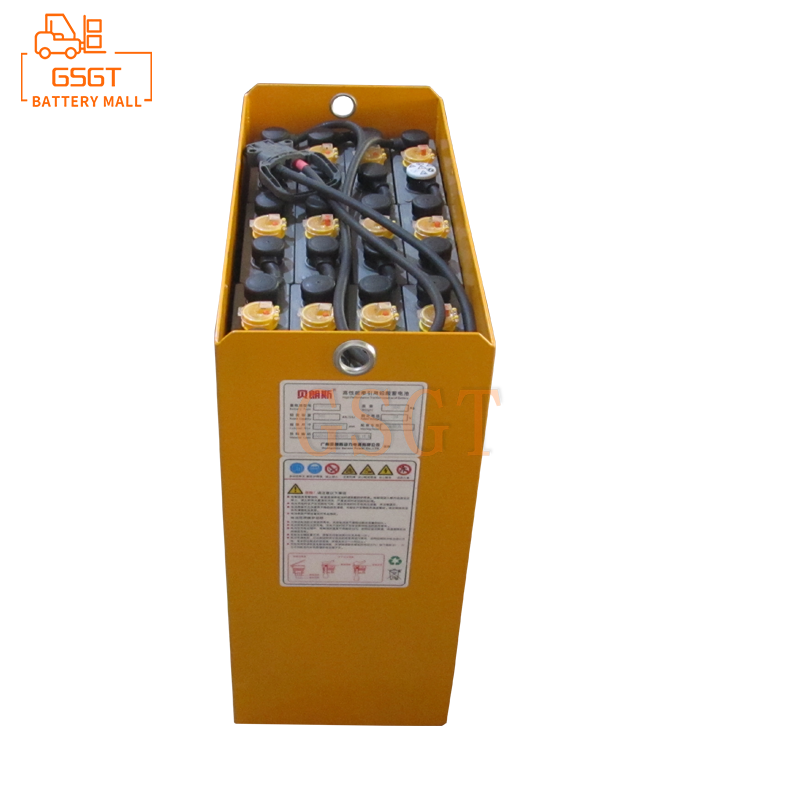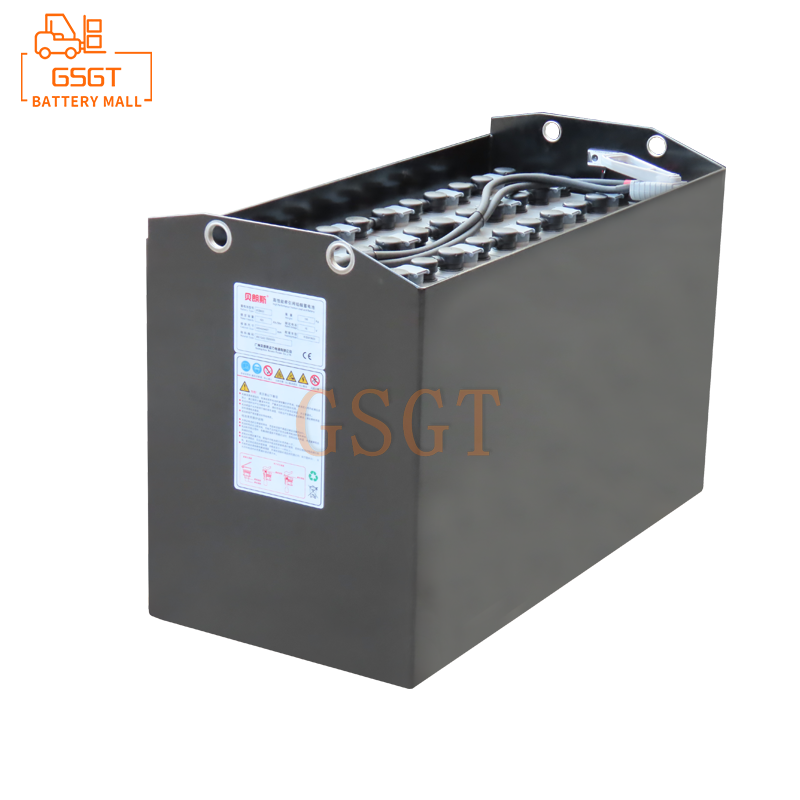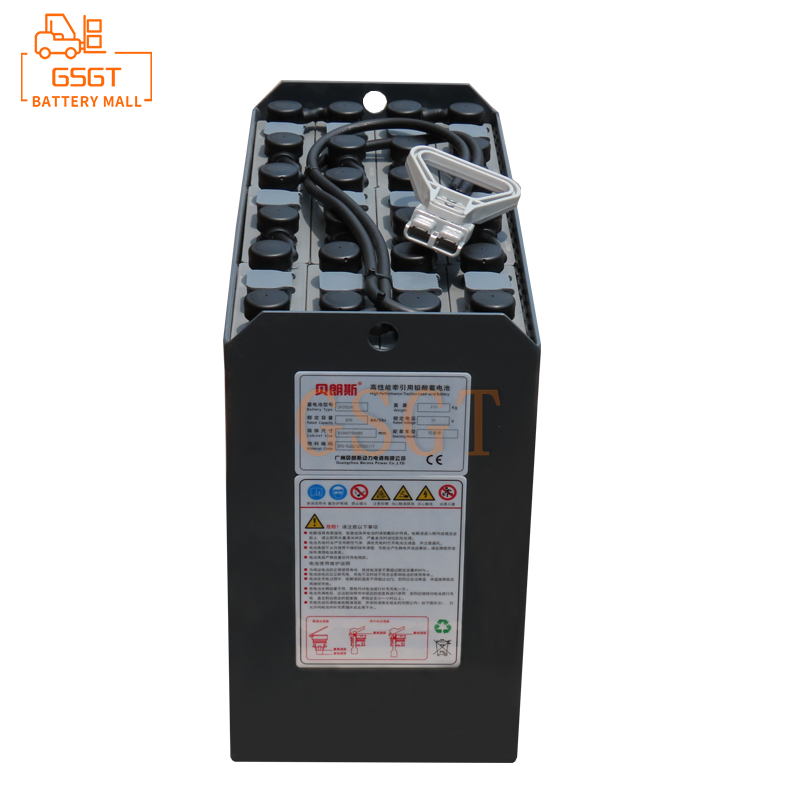Time:2025-06-04 11:23:27
Browse:624
In the field of modern logistics and industrial production, forklifts, as key material handling equipment, have attracted much attention for the performance and development of their power sources. Lead-acid batteries have long held an important position in the field of forklift power due to their advantages such as low cost and mature technology. However, as the industry's demand for efficient, environmentally friendly and intelligent operations continues to rise, the limitations of traditional lead-acid batteries in terms of energy density, cycle life and maintenance convenience have gradually become prominent. Against this backdrop, technological innovation has become the core driving force for the upgrading of lead-acid batteries in forklift applications, injecting new vitality into their continuous development.
The current application status and challenges of lead-acid batteries in Forklifts
At present, lead-acid batteries are widely used in the forklift market. According to relevant data, over a relatively long period of time in the past, its market share was as high as approximately 90%. This is mainly attributed to its relatively low initial purchase cost, which is highly attractive to numerous small and medium-sized enterprises with limited budgets. Moreover, after a long period of development, lead-acid battery technology has matured, product stability is relatively high, and the maintenance and repair system is also relatively complete. In some scenarios where the working conditions are relatively simple and the performance requirements for forklifts are not particularly strict, such as small warehouses and the handling of light goods, lead-acid battery forklifts can better meet the operational needs.
However, lead-acid batteries also face many challenges. In terms of energy density, its energy density is relatively low. Taking the common lead-acid battery used in forklifts as an example, its energy density is usually between 30 and 50Wh/kg. This leads to a relatively large battery volume and weight, which affects the effective load of the forklift and limits its driving range, making it difficult to meet the demands of long-term and high-intensity operations. In practical applications, forklifts may need to be charged frequently, interrupting the operation process and reducing work efficiency. As the number of charge and discharge cycles increases, battery performance gradually declines and capacity decreases. Enterprises need to frequently replace batteries, which increases operating costs. The maintenance of lead-acid batteries is cumbersome and requires regular checks of the electrolyte level and density, as well as the replenishment of distilled water, etc. During the charging process, acid mist may also be produced, causing pollution to the environment and posing certain safety hazards.
Technological innovation promotes the performance improvement of lead-acid batteries
Material innovation
New electrode materials: Researchers are dedicated to developing new electrode materials to enhance the performance of lead-acid batteries. For example, certain progress has been made in the application of lead-carbon composites. Adding carbon materials to the negative electrode can effectively improve the electrochemical performance of the negative electrode. Carbon materials have a high specific surface area and good electrical conductivity, which can promote electron transport, reduce the deposition of lead sulfate on the surface of the negative electrode, and inhibit the sulfidation of the negative electrode. Experimental data show that the negative electrode using lead-carbon composite materials can extend the battery cycle life by 20% - 30%, and under some working conditions, the charging and discharging efficiency of the battery can also be increased by 10% - 15%. There is also research on lead-oxide composite materials. By combining lead with specific oxides, the crystal structure of the electrode can be optimized, the stability of the electrode and the utilization rate of active substances can be improved, and thereby the energy density and cycle life of the battery can be enhanced.
High-performance electrolyte additives: The development of high-performance electrolyte additives suitable for lead-acid batteries is also an important direction. Surfactants, as a common additive, can reduce the surface tension of the electrolyte, promote the penetration of the electrolyte between the plates, make the electrochemical reaction more uniform, reduce local overheating and overcharging phenomena, thereby enhancing the safety and stability of the battery. The addition of corrosion inhibitors can effectively suppress the corrosion of the plates and extend the service life of the battery. Some new types of electrolyte additives can form a protective film on the surface of the battery plates during charging and discharging, preventing excessive reactions between the plates and the electrolyte. Experiments show that they can extend the battery life by 10% to 20%.
Improvement of manufacturing process
Optimization of plate manufacturing process: In the traditional paste coating plate manufacturing process, factors such as the mixing ratio of lead powder and dilute sulfuric acid, the thickness of the paste coating, and the curing and drying conditions have a significant impact on the quality of the plate. Nowadays, by introducing advanced automated production equipment and precise process control technologies, these parameters can be controlled more accurately. High-precision metering equipment is adopted to control the mixing ratio of lead powder and dilute sulfuric acid, and the error can be controlled within a very small range to ensure the uniform and consistent composition of the plates. By using an intelligent temperature and humidity control system, the curing and drying conditions are optimized to make the physical properties of the plates more stable. These improvement measures can significantly enhance the quality of the plates, thereby improving the overall performance of the battery, making the battery capacity consistency better and extending the cycle life by 10% to 15%.
Innovation in battery assembly and formation technology: In the battery assembly process, advanced welding techniques and sealing processes are adopted to reduce the internal connection resistance of the battery and enhance its conductivity and safety. The new welding technology can achieve a firm connection between the plates and the busbars, reduce the contact resistance by 15% - 20%, and decrease energy loss. During the formation process, intelligent charging algorithms and precise temperature control technology are applied to dynamically adjust the charging current and time based on the real-time status of the battery, making the battery formation more thorough and uniform, and improving the initial performance and consistency of the battery. Experiments show that the initial capacity of the battery after the optimized formation process can be increased by 5% - 10%, and the performance differences among the batteries are significantly reduced.
Innovation in green and environmentally friendly technologies
Reduce pollution in the production process
Clean production process: Lead-acid battery manufacturing enterprises actively adopt clean production processes to reduce pollutant emissions during the production process. During the manufacturing process of the plates, lead-free or low-lead production technologies are adopted to reduce the generation of lead dust and lead smoke. Improve the manufacturing process of lead powder, adopt closed production equipment and reduce the leakage of lead powder. In the battery assembly stage, optimize the electrolyte filling process to reduce electrolyte waste and leakage risks. Through the application of these clean production processes, the pollutant emissions during the production process can be reduced by 30% to 50%.
Energy conservation and emission reduction measures: Introduce energy-saving equipment and technologies in the production workshop to reduce energy consumption. Adopt efficient ventilation and lighting systems, rationally plan the workshop layout, and improve energy utilization efficiency. By using waste heat recovery technology, the waste heat generated during the production process can be recovered and utilized for heating water or other production links, thereby reducing the energy costs of enterprises. Some enterprises have reduced energy consumption per unit of product by 15% to 20% by implementing energy conservation and emission reduction measures.
Improve the level of recycling and utilization
Research and development of efficient recycling technology: Develop efficient lead-acid battery recycling technology to increase the recovery rate of valuable metals such as lead. At present, some advanced recycling processes adopt a combination of physical and chemical methods, which can increase the lead recovery rate of used lead-acid batteries to over 98%. Different components in batteries are separated through physical means such as crushing and sorting, and then lead is purified and refined by chemical methods to obtain high-purity lead for the production of new batteries. This efficient recycling technology reduces resource waste and lowers the reliance on primary lead ore.
Establishing a complete recycling system: It is of vital importance to establish a complete recycling system for lead-acid batteries. Enterprises cooperate with professional recycling institutions to establish recycling outlets, facilitating users to return used batteries. Through economic incentive measures, such as providing users with certain subsidies, the enthusiasm of users to return used batteries can be enhanced. Recycling institutions transport the collected used batteries to processing plants for professional processing, achieving standardized recycling and environmentally friendly treatment of used batteries and reducing their pollution to the environment.
Innovative service models of lead-acid battery rental enterprises
A company specializing in lead-acid battery rental has provided customers with high-quality battery rental solutions through technological innovation and service model innovation. In terms of battery technology, high-performance lead-acid batteries that have undergone technological improvements have been introduced. By adopting new electrode materials and manufacturing processes, the performance of the batteries has been significantly enhanced. In terms of service mode, a remote battery monitoring platform has been built by using Internet of Things (iot) technology to keep track of the status of leased batteries in real time. Through data analysis, provide customers with personalized battery maintenance and replacement suggestions. The enterprise has also launched a battery capacity guarantee service. If the battery capacity declines by more than a certain proportion during the lease period, it will replace the battery for the customer free of charge. This innovative service model is highly favored by customers, and the company's market share is constantly expanding. At the same time, it has also promoted the application and development of lead-acid batteries in the forklift rental field.
Future Outlook
With the continuous advancement of technological innovation, the prospects for lead-acid batteries in forklift applications remain broad. In terms of material research and development, it is expected to develop electrode materials and electrolytes with even better performance, further enhancing the energy density, cycle life and charge and discharge efficiency of batteries. In terms of manufacturing processes, intelligent and automated production will become mainstream, and production efficiency and product quality will be further enhanced. Intelligent technologies will be deeply integrated into the management of lead-acid batteries to achieve more precise condition monitoring, fault diagnosis and predictive maintenance. Green and environmentally friendly technological innovation will make lead-acid batteries more environmentally friendly and efficient in the production and recycling processes, meeting the requirements of sustainable development. Through technological innovation, lead-acid batteries will continuously enhance their performance and competitiveness, continue to play a significant role in the forklift power field, and work together with other new battery technologies to promote the development and progress of the forklift industry.

$1105

$2450

$1060

$850

MESSAGE
Professional And Efficient
Security
Affordable Price
Professional Services